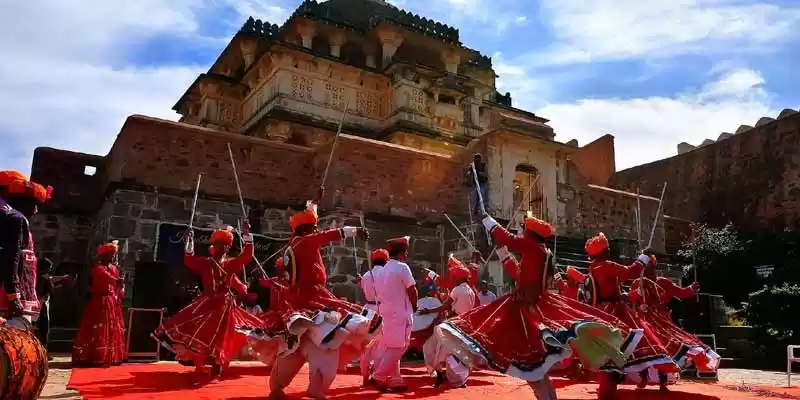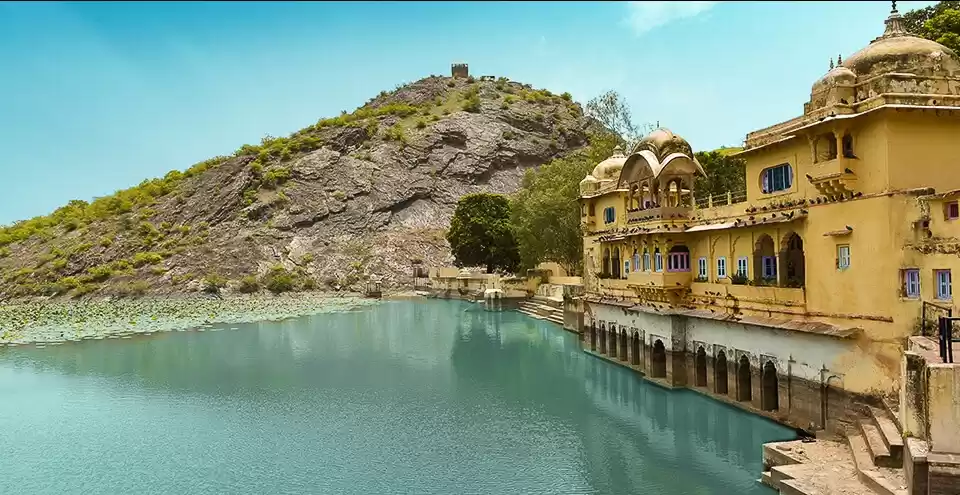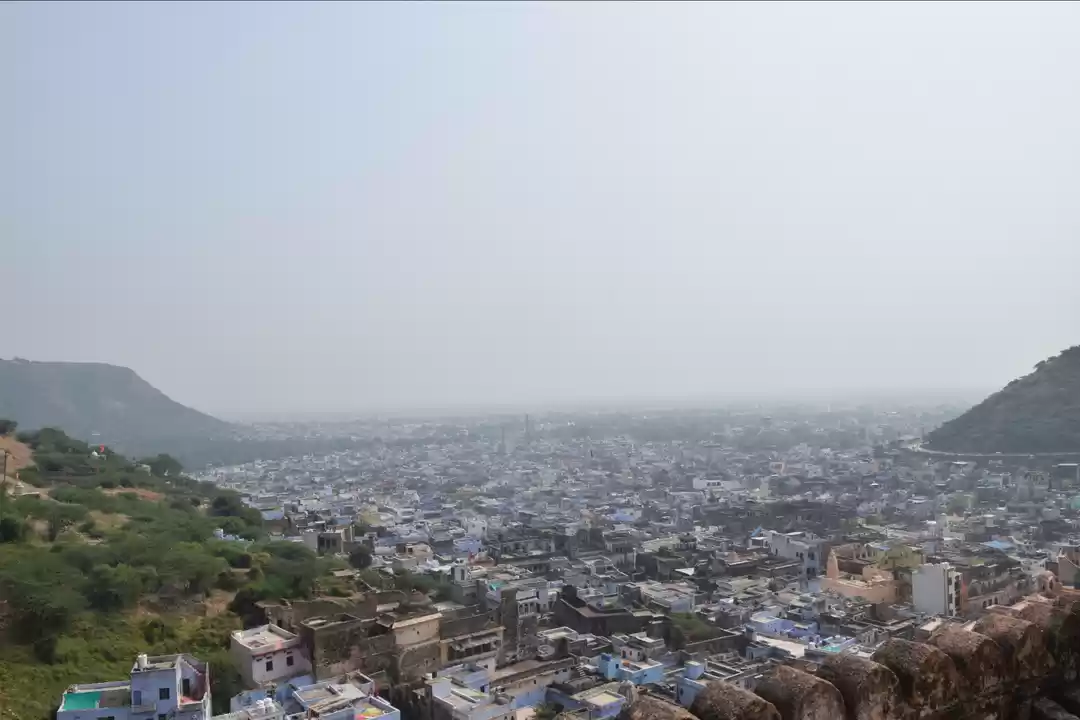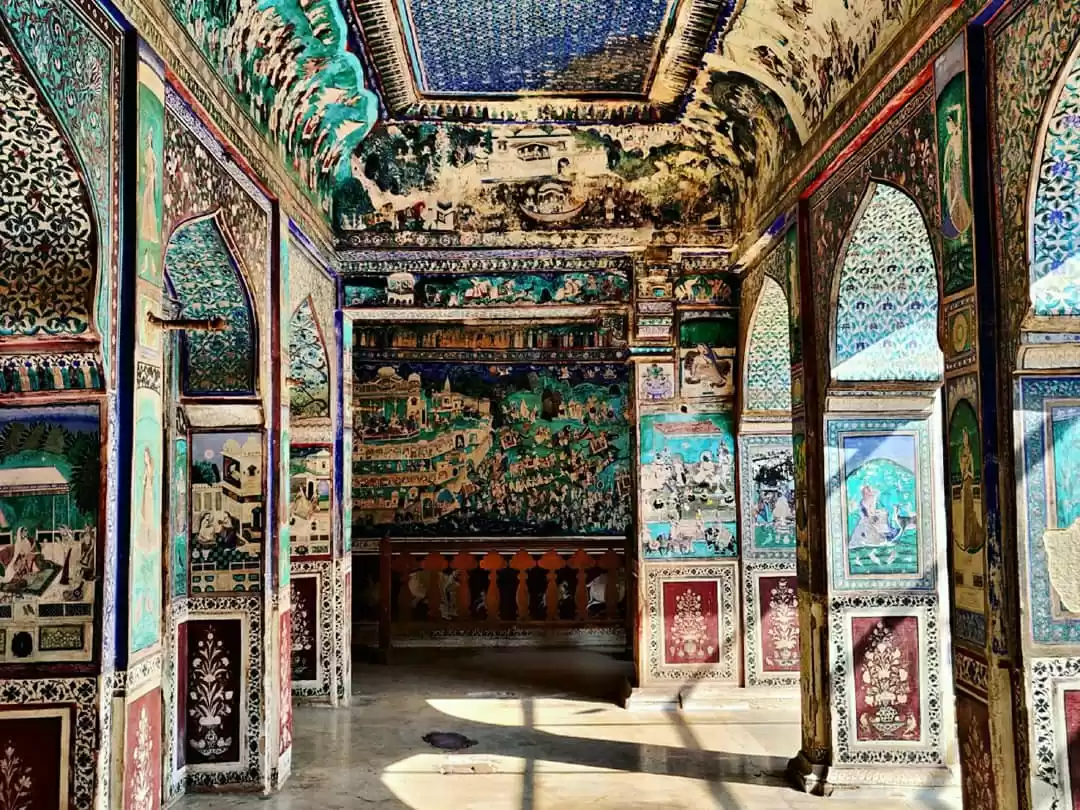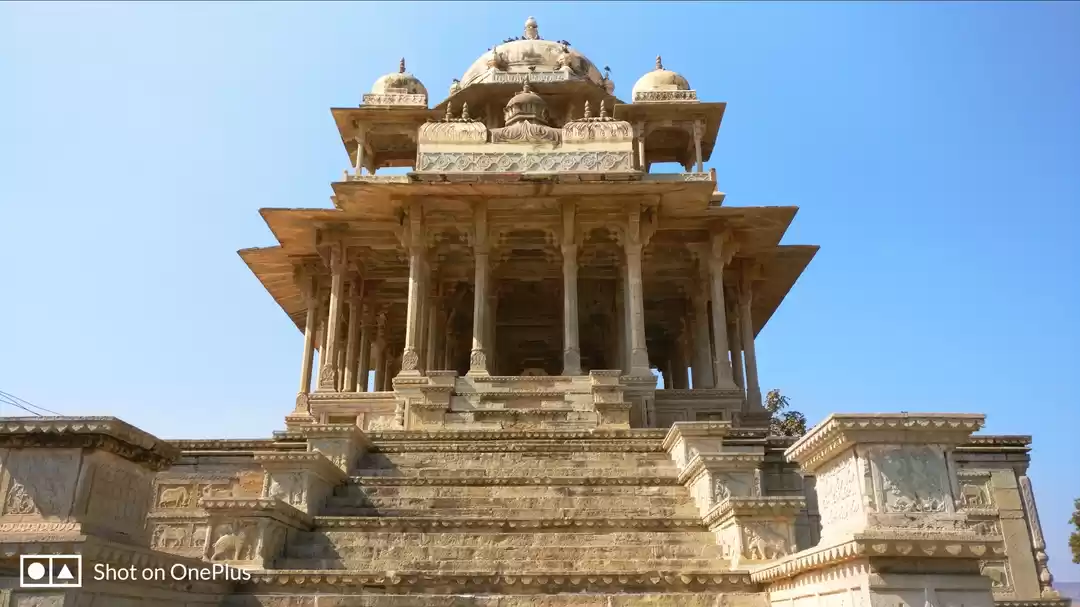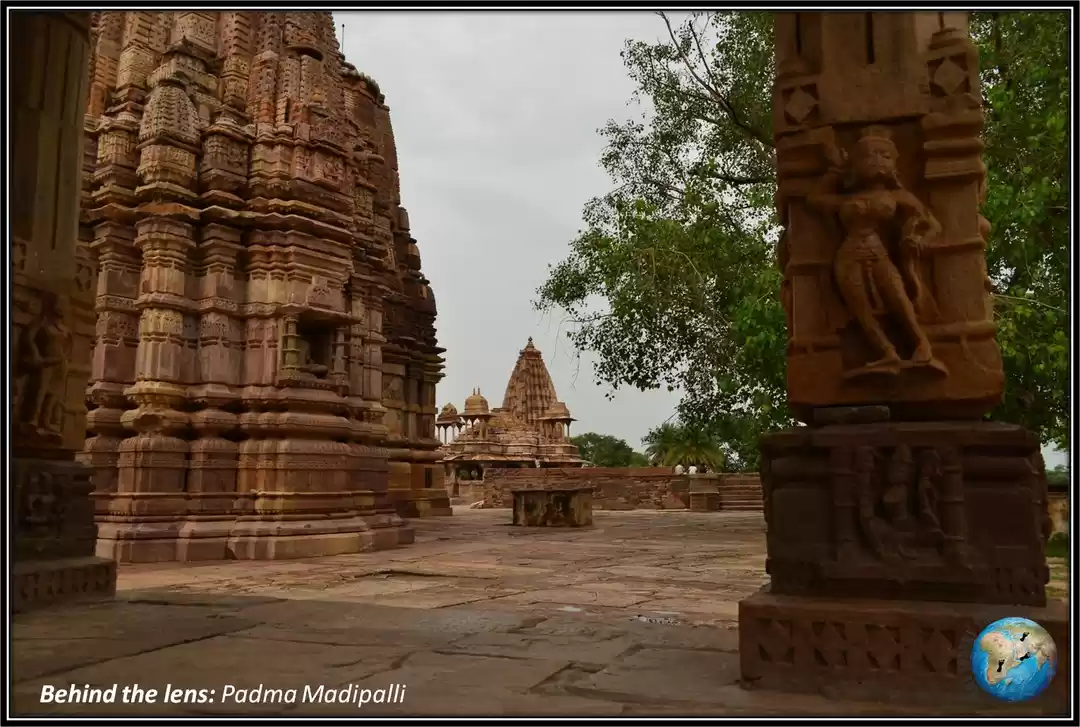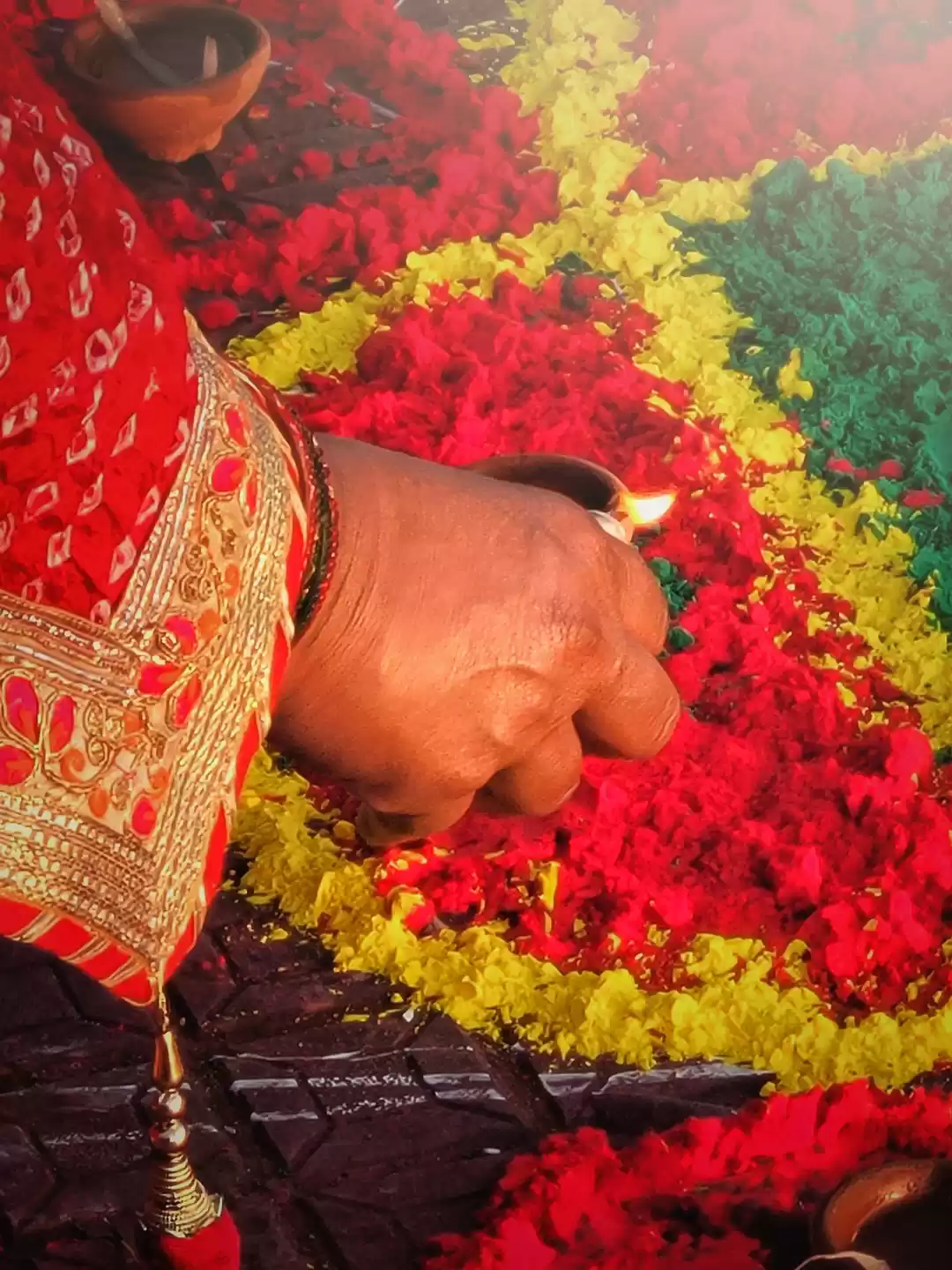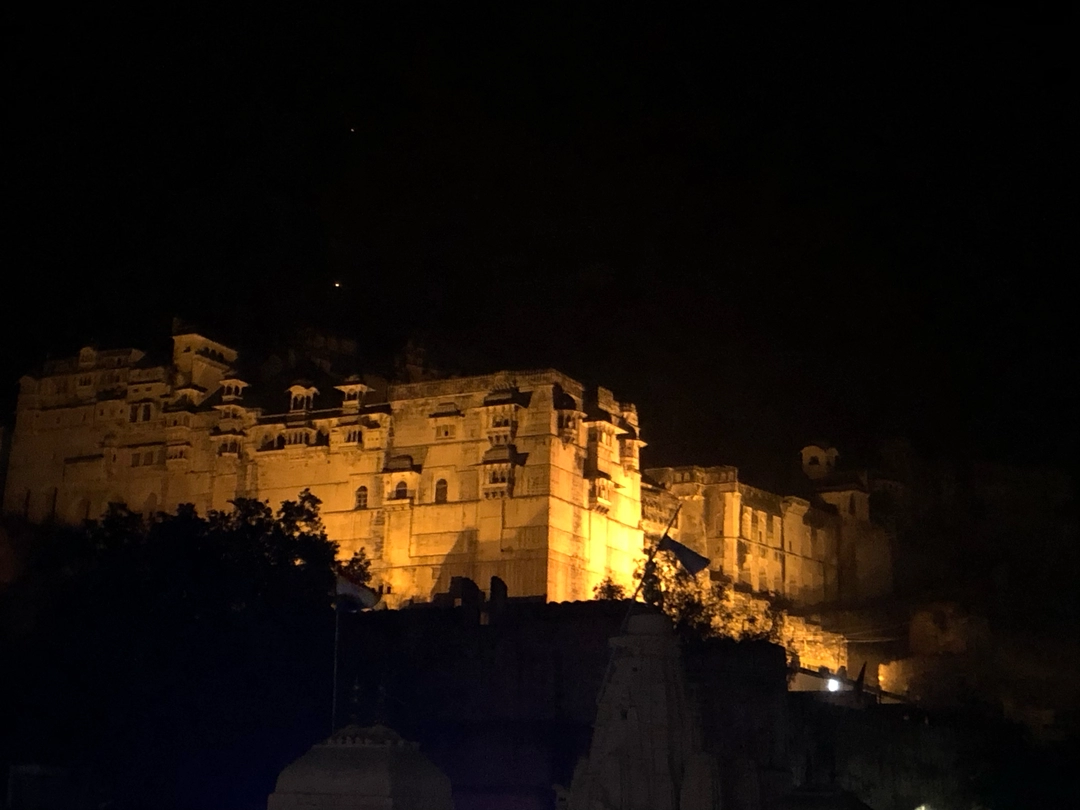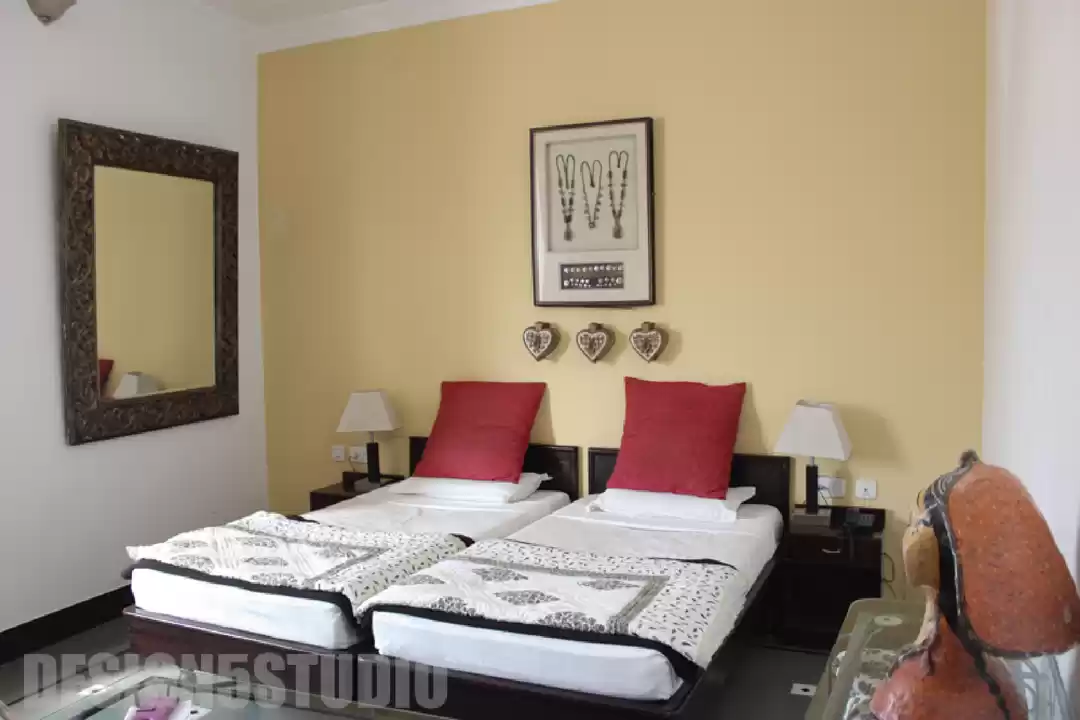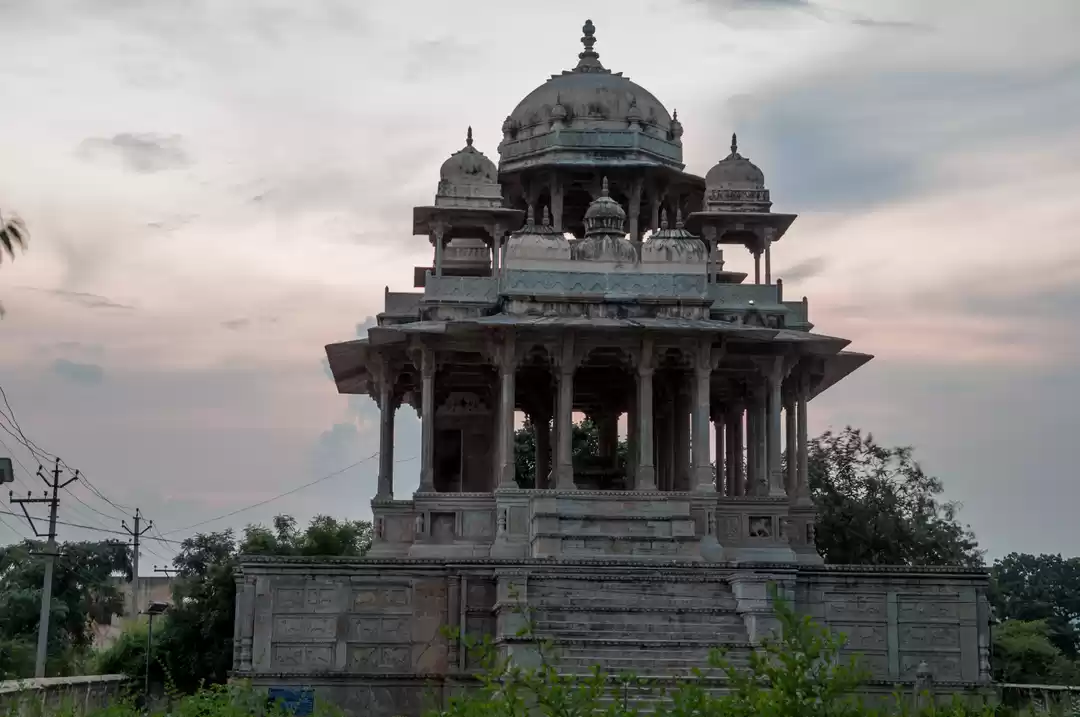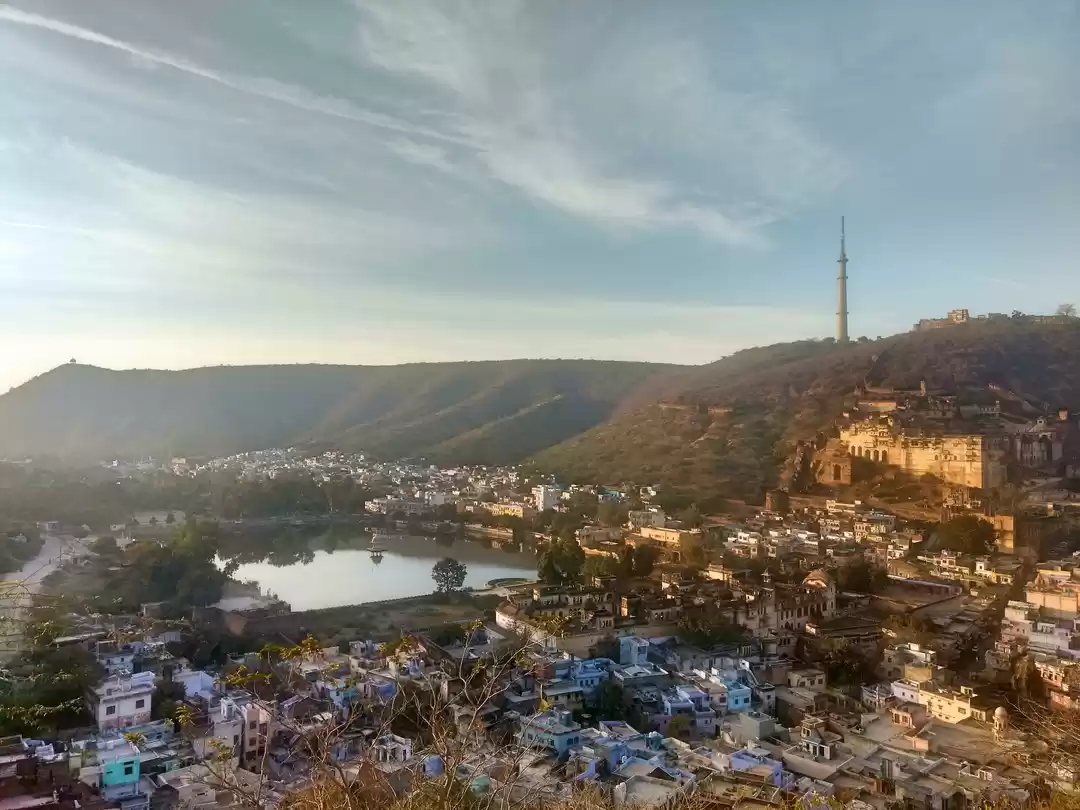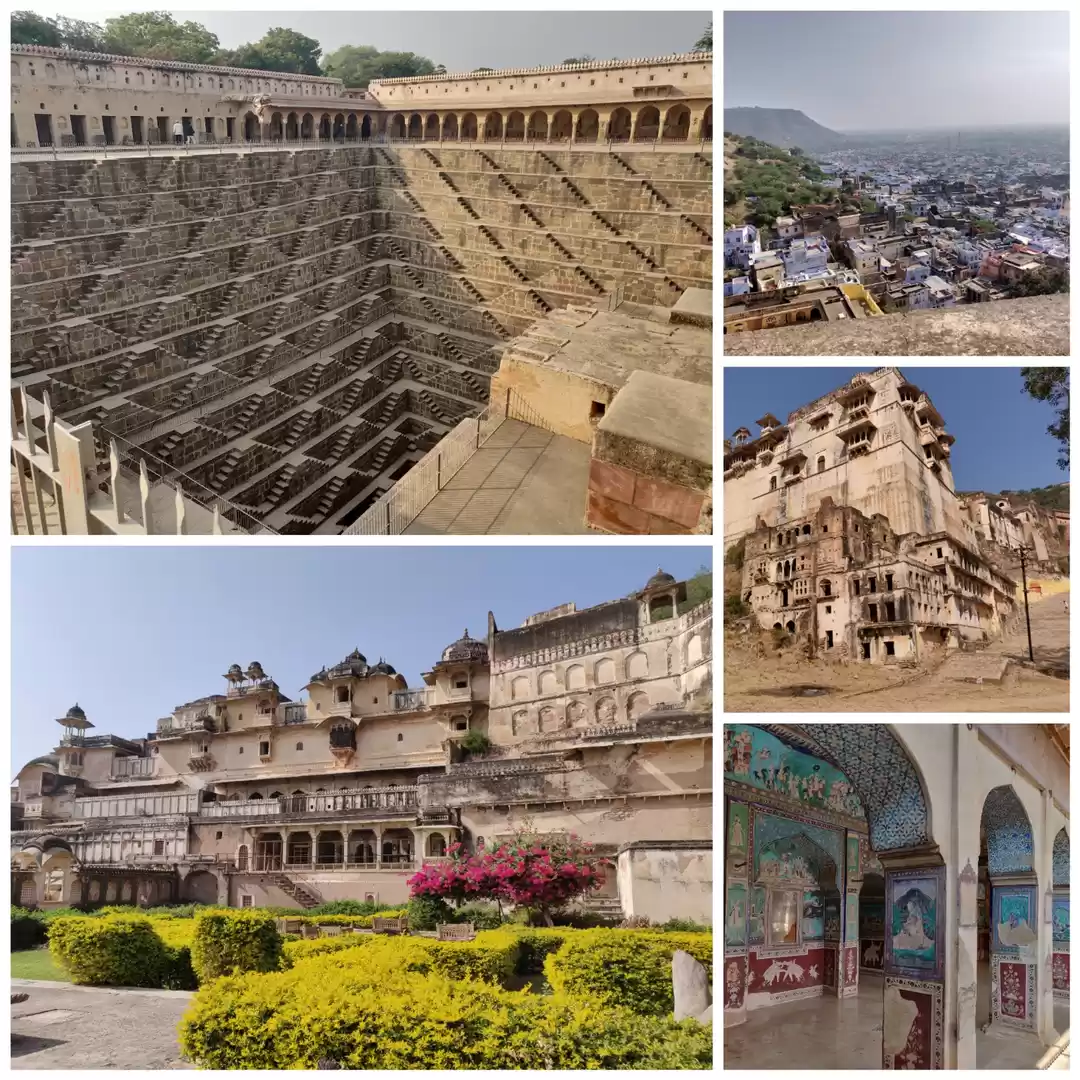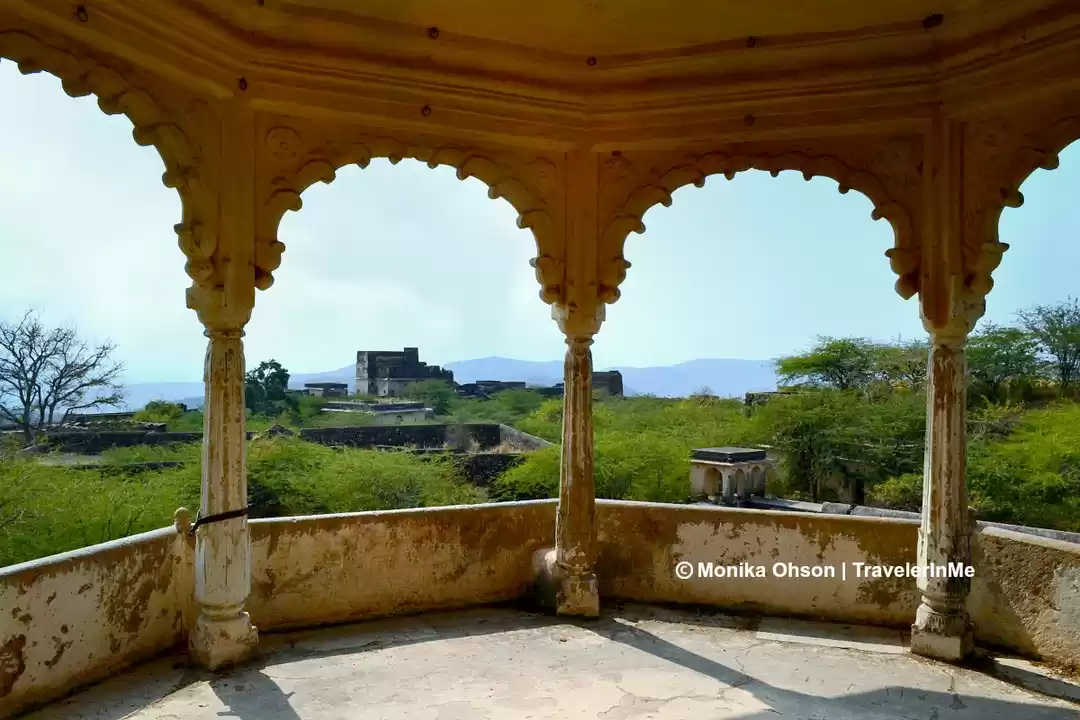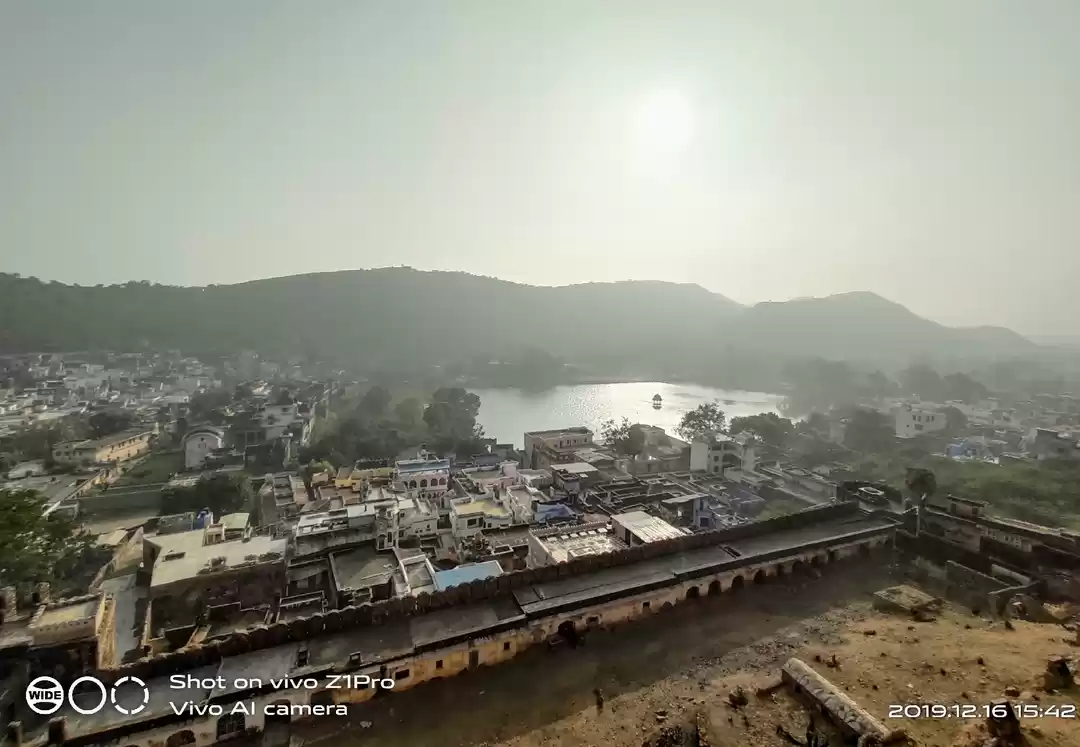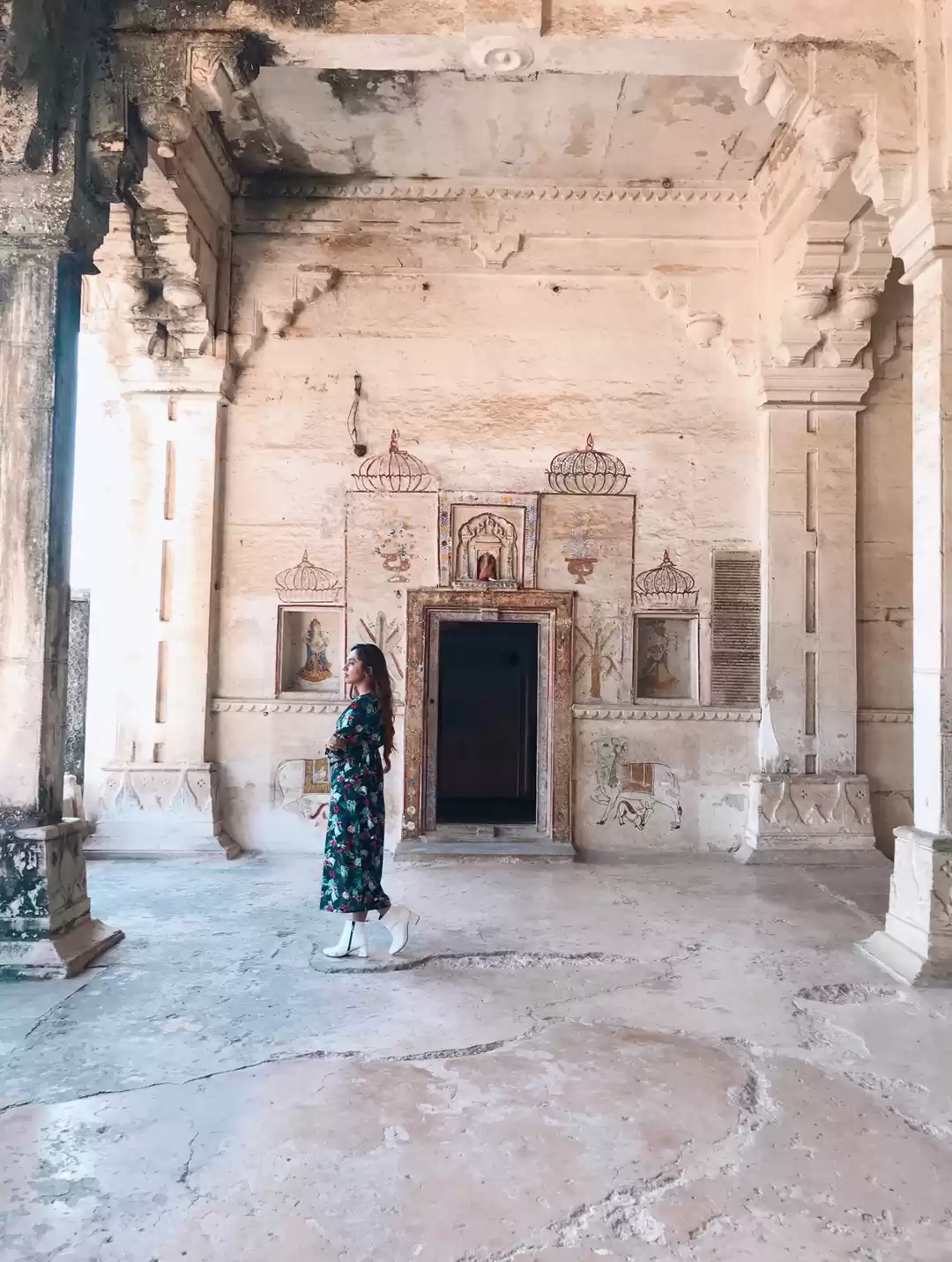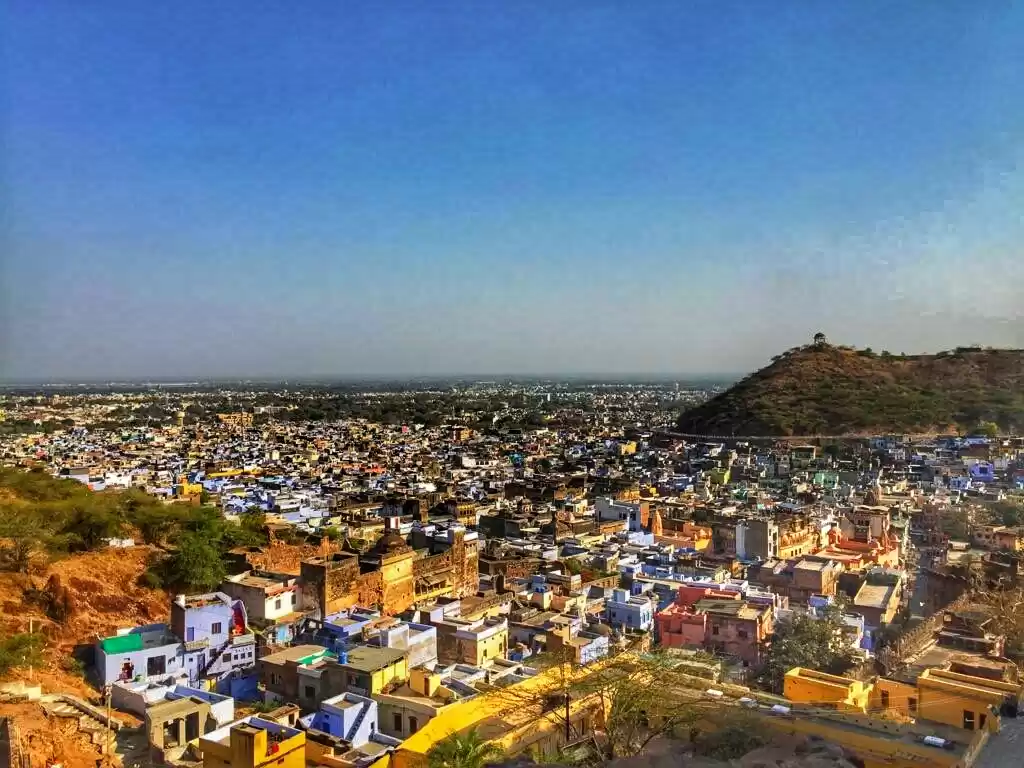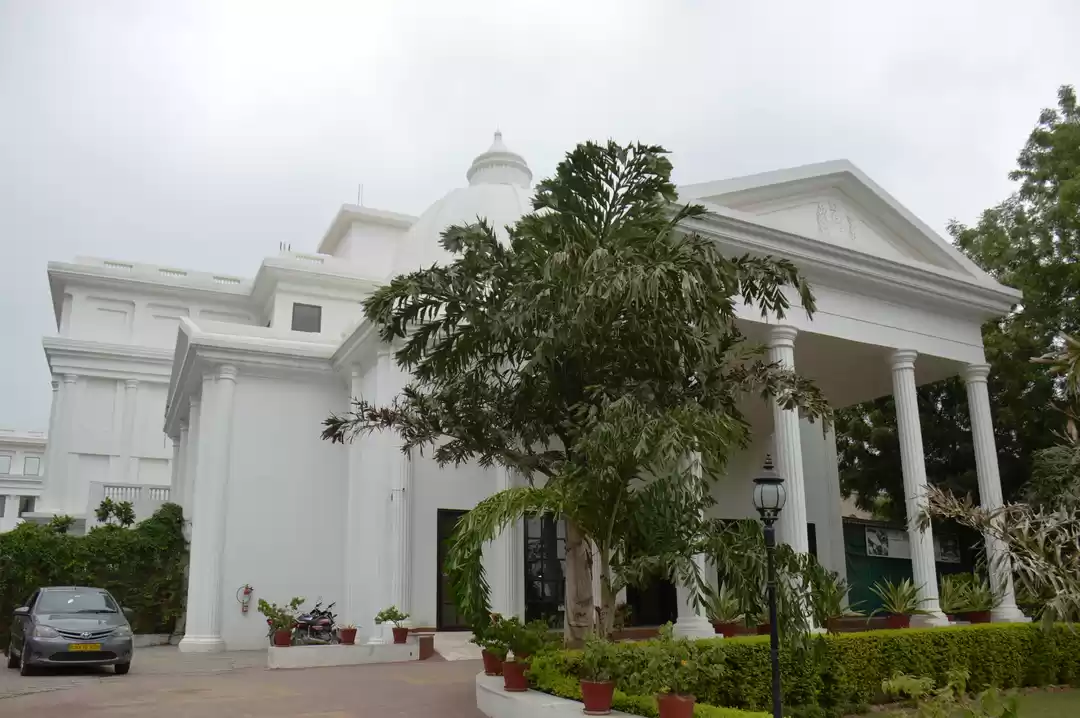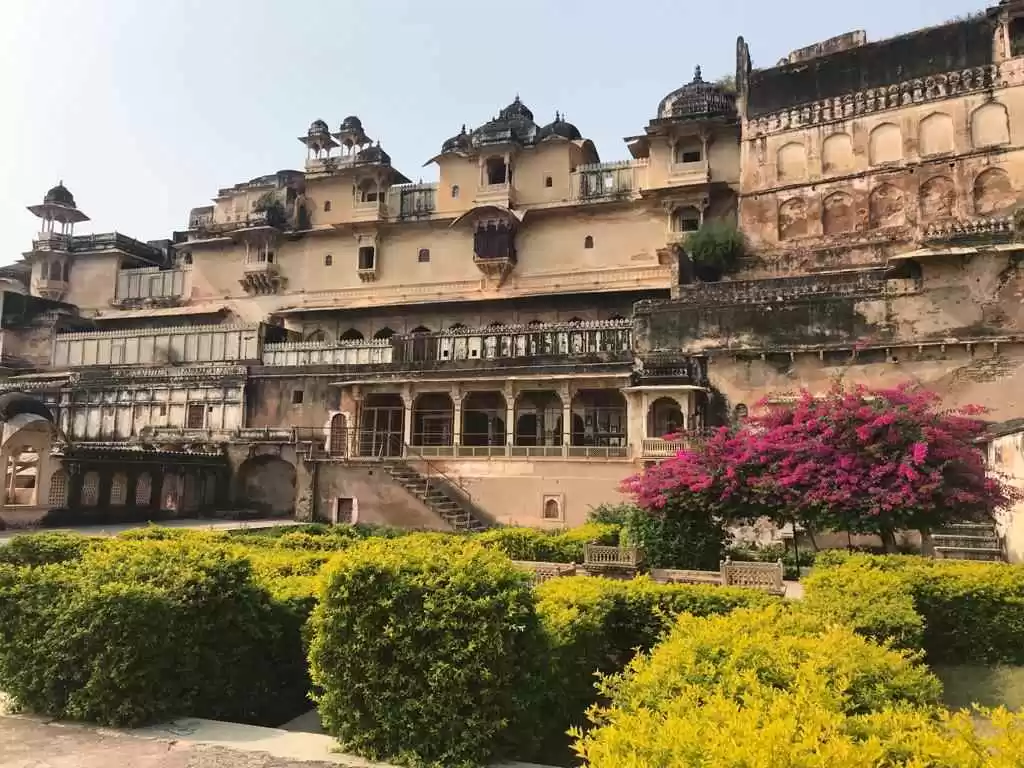During our brief trip to Kota, we decided to visit the historic city of Bundi on one of the free days and hired a car for the same. Bundi- famous for its architectural marvels like fort, palaces and step wells is just 35 km from Kota.
After having breakfast, we left for Bundi around 9 A.M. and by 9:40, we were already in Bundi. By Mumbai standards, it just felt like an extended suburb of Kota.
Our driver parked the car at one of the gates of Bundi’s old city and we decided to walk it down till the prime attraction of Bundi- the Garh palace. First look of this old city of Bundi makes you fall in love with it. Narrow alleyways, houses and temples painted in blue colour, wall paintings done on their exterior façade- everything is really pretty. The only thing Bundi really needs is cleanliness. Just as we entered the old city there were several piles of rotting garbage, further on the same road we were saved by fraction of a second from someone blindly throwing stale Dal-rice towards us from their first floor balconies.
This same market (aka Sadar Bazar) towards the end has a couple of small shops of the artists who do miniature paintings which you can take back as souvenirs. Apparently they also make small nail-art in their local painting style live in front of you- on your nails for approx. 50 to 100 bucks.
So next we climbed the huge ramp leading to the ticket counters of the Garh palace. The official ticket rates printed on the ticket were exorbitant but the ticket guy asked just for the 1/3rd amount for all 3 of us plus camera- reason unknown. Unless you buy a camera ticket even to carry a mobile phone with you, you are not allowed to take it inside and will have to deposit it at the ticket counter.
Just next to the ticket counter is the massive entrance to Garh palace’s complex. A steep ramp made of stones then continues for another 10/15 minutes till one reaches the actual palace. This ramp within no time takes one to a tremendous height from where a panoramic view of ‘blue’ Bundi is seen.
Picture: Ramps of Garh palace, Bundi
The actual entrance of the Garh palace- called as Hathi Pol (literally elephant gate) is a masterpiece in itself. Hathi pol is a very tall gate flanked by two slender turrets like structure which support two big brackets which in turn support two massive elephant figures. The gate has one of those extra tall metal doors with spikes all over them. As we enter through the gate, a large fresco of Sun God can be seen on the gate’s ceiling. The other end of the Hathi gate is more intricately elegant than its masculine front facade.
Picture: Hathi Pol, Garh palace, Bundi
One may be a bit surprised to see the front of the actual palace after seeing the Hathi pol neatly. Frontal design of the palace is stark opposite to that of the gate, as it’s largely plain and modest. It forms of an arcade running through the length of the façade on ground floor, supporting a colonnade on the first floor. The plain colonnade however supports a comparatively more ornate ‘king’s throne’ jutting out of it.
Picture: Facade of Garh palace, Bundi
First floor of the palace also has a large courtyard flanked by a few rooms on one side and Diwan-e-khas which has elephant capitals on all of its pillars. The rooms on the other side have Bundi wall paintings on its walls and ceiling- some of which still look quite fresh. A small staircase in one corner of the courtyard leads to an upper floor which has Bada mahal i.e. King’s and Queen’s private chamber every single inch of which is painted gorgeously- right from the walls and niches to its majestic vaulted ceiling!
Going back to the lower courtyard, I clicked the amazing view of the entire city that’s seen from this height- from the hills, to the squarish blue houses, uncountable lanes and by-lanes, the large Naval Sagar Lake just at the base of the palace. All of these surely made for a great panorama.
 Picture: Panorama of Bundi city, clicked from garh palace
Picture: Panorama of Bundi city, clicked from garh palace
Picture: Diwan E Khas, Garh palace, Bundi
Picture: Painted vault ceiling of Bada mahal, Garh palace, Bundi
Coming out of the palace from the Hathi pol, there is another small ramp that leads to the prime attraction of Bundi- the Chitrashala- literally the school of paintings created by king Rao Raja Ummaid Singh in 1739. Frontal garden of the Chitrashala is nicely maintained with ornamental and flowering shrubs which complement the Rajput architecture surrounding it. It even has a small pool- where the queen and king used to take bath- as told by the guide there.
As we climbed the steps and entered Chitrashala, we found ourselves surrounded by stunning masterpieces of the Bundi school of paintings. Krishna- Radha’s love story and other incidences in Mahabharata are the main subjects of the paintings here. Some of them are the raas lila, Krishna stealing clothes of Gopis, Gowardhan parvat incidence etc. Another very famous painting here depicts Goddess Annapurna sitting on elephant offering food to Lord Shiva who is on a bull with his family. This painting is made in such a way that the faces of the bull and the elephant are merged with eachother forming a beautiful effect.
Other paintings mostly depict the everyday life of king and the queen- various games being played, alcohol being consumed by the queen, queen playing with a yoyo etc. On the other side of Chitrashala, a map of the holy town of Nathdwara is drawn on the wall very beautifully.
Chitrashala definitely is one of a kind place and hence needs continuous preservation efforts for these paintings.
Picture: Chitrashala, Bundi (Ground floor)
Picture: One of the paintings in Chitrashala, Bundi
Picture: One of the paintings in Chitrashala, Bundi
 Picture: Garh palace and Taragarh fort as seen across Naval Sagar Lake, Bundi
Picture: Garh palace and Taragarh fort as seen across Naval Sagar Lake, Bundi
Moving out from here, a ticket seller sits just at the exit for those who want to go further up to the Taragarh fort. (Garh palace and Chitrashala are also part of the same fort but situated at the base of it.) Ticket costs approx. 150 for one person. But the ticket guy himself advised us not to go further up as the fort is entirely in ruins today and has a full grown jungle all over which is not maintained by anyone. He also warned us of no security in the fort as hardly anyone ends up going up to the fort. We also thought it would be sane to avoid the fort and rather cover other places in Bundi- which it is famous for.
Next we drove through the tiny lanes of Bundi and drove on the banks of the beautiful Naval Sagar Lake and further to Rani ji ki Baori in the main town. Rani ji ki Baori (literally ‘stepwell of the queen’) is a magnificent step well built by the Queen Nathavati of Rao Anirudh Singh’s queen in 1699 in the king’s memory. Ticket bought at this step well is also valid for other 2 monuments in Bundi i.e. Sukhmahal palace and 84 pillared cenotaph.
Picture: Rani ji ki baori, Bundi
As we entered the step well, we were flabbergasted to see such a magnificent monument in the middle of this busy and crowded area. Monuments of such grandeur are seldom found outside India- and Rajasthan has the biggest share in them! The wide steps of the step well are complemented by the tall intricate elephant toranas (by now I was convinced that the rulers of Kota- Bundi were obsessed with elephants). Otherwise the step well is largely plain and simple with exception of a few murals on the side walls. The well as of now has very little water ; vegetables waste seemed to be floating on whatever was left.
Picture: Sukhmahal palace, Bundi
Picture: Dhabhai kund, Bundi
Next we went to Sukhmahal palace- approx. 1.5 km from here- a tiny summer retreat built by Rao Raja Vishnu Singh on the banks of Jait Sagar Lake during 1776. Also this is where the Noble prize winner and English author Rudyard Kipling had stayed for a few days and wrote a part of his novel ‘Kim’. Rudyard Kipling is said to have been smitten by the manmade and natural beauty of Bundi which is said to have inspired him to write about it.
Government museum of Bundi is also situated inside the same complex, which was closed that time for some reason. Later we drove back to the main town and found our next destination in one of the lanes (near Lanka gate) filled with cows and their dung- The Dhabhai Kund. It is the largest of the step wells in Bundi town but maybe one of the least visited despite it being a non-ticketed monument. Dhabhai kund is a squarish stepwell (unlike Raniji ki baori which is linear) probably built by two merchant brothers around 17th century. (Exact information is missing on the internet also no information is put up at the kund by Govt.) This kund gives an impression of large inverted pyramid. The kund is so grand that it overwhelms you with its geometry at the first sight. Other than its scale, the kund has no carvings whatsoever. For those who want to see more of step wells, there is a twin Nagar Sagar twin step well one on both sides of the road somewhere in the vicinity.
Picture: 84 pillared cenotaph, Bundi
Picture: 84 pillared cenotaph, Bundi
Our last destination in Bundi was the 84 pillared cenotaph- also known as Chourasi Khambonki Chhatri in Hindi. It was little far from the main town area but on the same route which we were supposed to take to go back to Kota. It was constructed in 1740 by the Maharaja of Bundi, Rao Raja Anirudh, as a memorial to his foster brother, Deva. The cenotaph has a Shiv linga in the centre and has a total of 84 pillarson both the floors together. The guard at the monument took us in and around the structure and briefed about the murals on its exterior walls. It has murals of various Dashavatars of Vishnu, Samudramanthan (churning of the sea), Shiva Parwati, Dhola Maru- the famous couple from Rajasthani folklore etc. We just finished with the temple and it started raining untimely. We wore our shoes and ran towards the car and drove back towards Kota.


